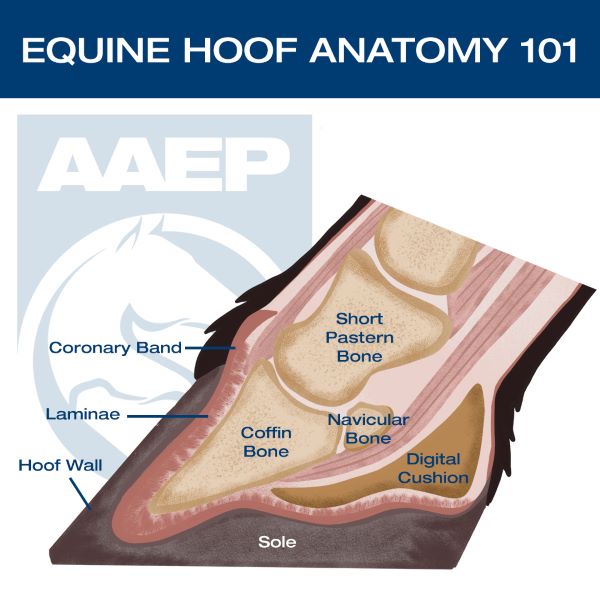Understanding Hoof Abscesses
From AAEP:
Sooner or later (and especially at this time of year), nearly all horse owners will deal with a hoof abscess. But what does “hoof abscess” actually mean? The diagram below shows a simplified view of the equine hoof to help you visualize the structures involved in this process.
Although most commonly seen during the wet winter and spring months, hoof abscesses can plague horses year-round and usually occur when debris and bacteria enter the foot through hoof cracks and wounds, even horseshoeing holes. The bacteria then get trapped between the sensitive laminae (the tissue layer that bonds the hoof capsule to the coffin bone) and the hoof wall or sole and create pus; the pus builds up over the course of time and puts pressure behind the hoof wall or sole, until it causes the sudden onset of acute lameness when the pain finally becomes too great.
Hoof abscesses can mimic other more serious diseases or injuries, so involving your veterinarian early on in the diagnosis and prompt treatment of this condition is always a good idea. Some abscesses will be uncomplicated and rupture on their own like a large pimple at the coronary band or heel bulbs; other abscesses, however, could require radiographs and will need to be surgically drained.
As always, consult your horse doctor for more information and advice!











